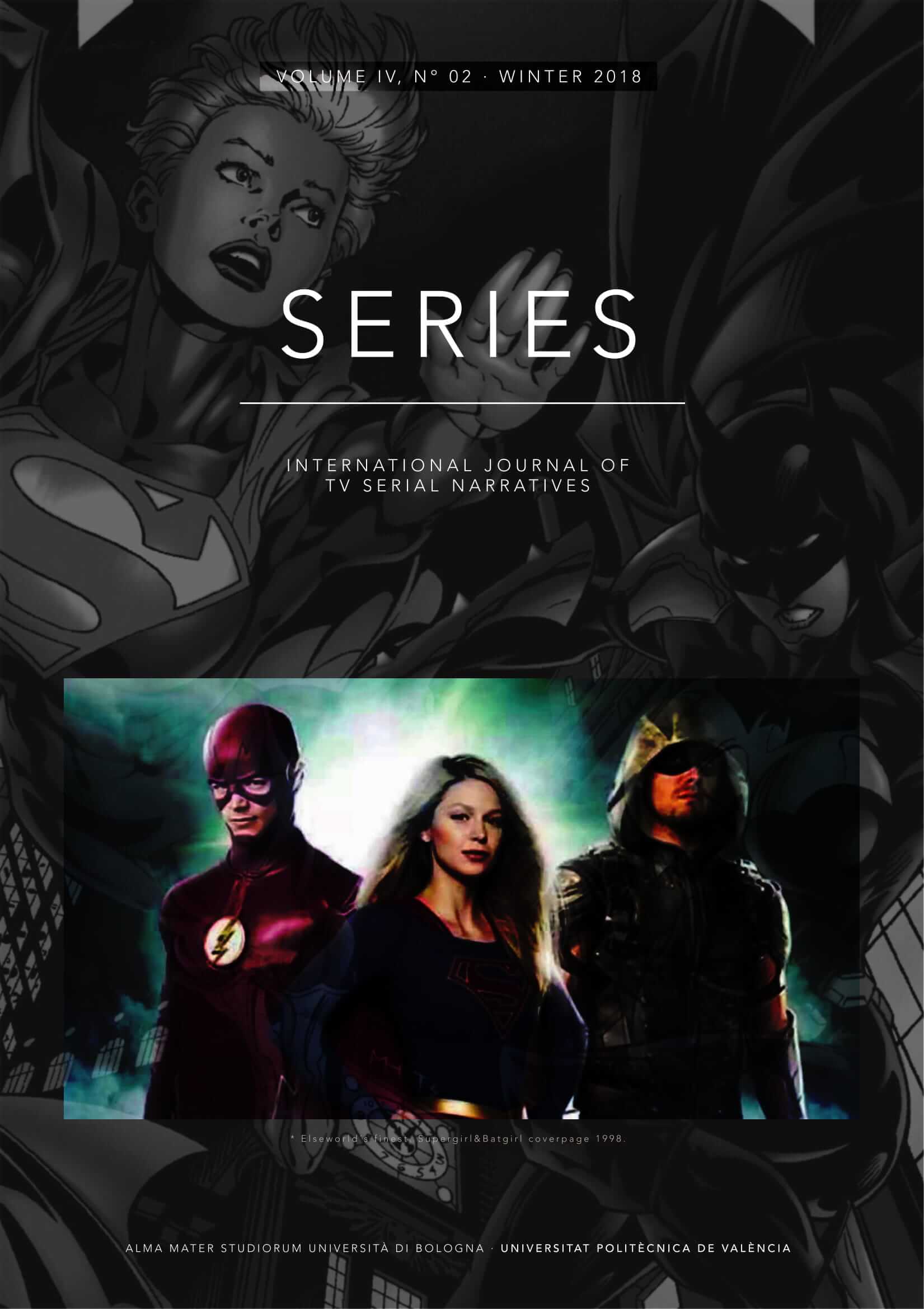The CW Arrowverse and myth-making, or the commodification of transmedia franchising
DOI:
https://doi.org/10.6092/issn.2421-454X/8177Palabras clave:
The CW, DC comics, transmedia, convergence, superheroResumen
The CW’s influence over the American network television landscape has never ceased to grow since its creation in 2006. The network’s audience composition reflects The CW’s strategies to improve its original content as well as diversifying it, moving away from its image as a network for teenage girls. One of the key elements which has supported this shift was the development of the Arrowverse, a shared narrative space based on DC-inspired original series which provided the network with a fertile groundwork to build upon. The CW did not hesitate to capitalize on its not-so-newfound superhero brand to induce a circulation of myth, relying on these larger-than-life characters at the heart of American pop culture to fortify its cultural and historical bedrock and earn its seat along the rest of the Big 4. This paper aims to decipher how The CW pioneered new technology-based tools which ultimately changed the American media-industrial landscape of the early 2010s, putting these tools to the test with the network’s superhero series. It will thus also address how the Arrowverse set of characters has triggered cross-media and transmedia experimentations, how The CW stimulated rapport with its strong fan base, as well as how the network has been able to capitalize on the superhero genre’s evocative capacities.Citas
Anu (2014). “Is Felicity the new Chloe Sullivan?” Green Arrow TV fan forums at KsiteTV. http://www.ksitetv.com/forums/showthread.php?169971-Is-Felicity-the-new-Chloe-Sullivan (last accessed 12-05-18)
Basile, Nancy (2016). “15 Times the Arrowverse copied Smallville.” CBR.com. https://www.cbr.com/15-times-the-arrowverse-copied-smallville/ (last accessed 12-05-18)
Caldwell, John Thornton (2008). Production Culture: Industrial Reflexivity and Critical Practice in Film and Television. Durham: Duke University Press.
Dyer, Richard (1998). Stars. London: British Film Institute.
Foggi, Jeanine (2015). “Why The CW is Happy to Grow up.” Adage. https://adage.com/article/media/cw-happy-grow/297888/ (last accessed 21-10-2018).
Francisco, Eric (2018). “CW President Says There’s a Strict Limit on Arrowverse Shows.” Inverse. https://www.inverse.com/article/40396-cw-new-arrowverse-shows-limit (last accessed 21-10-2018).
Gray, Jonathan (2010). Show Sold Separately: Promos, Spoiler and Other Media Paratexts. New York: New York University Press.
Holloway, Daniel (2017). “CW Chief Looks to Lure Women Viewers Back with Dynasty & Riverdale.” Variety. https://variety.com/2017/tv/news/dynasty-riverdale-tca-1202513508/ (last accessed 21-10-2018).
Immersive Youth Marketing official website.
http://www.immersiveyouthmarketing.com/work/the-cw-network (last accessed 12-05-18 and no longer accessible as the company is now closed)
Jenkins, Henry (2006). Convergence Culture: Where Old and New Media Collide. New York: New York University Press.
Jenkins, Henry; Ford, Sam & Green, Joshua (2013). Spreadable Media: Creating Value and Meaning in a Networked Culture. New York: New York University Press.
Jenkins, Henry; Mizuko, Ito; Boyd, Danah (2016). Participatory Culture in a Networked Era. Cambridge: Polity Press.
Johnson, Derek (2013). Media Franchising: Creative License and Collaboration in the Culture Industries. New York: New York University Press.
Levin, Gary (2015). “Supergirl Soars with Women as Well as Men.” Usatoday. https://eu.usatoday.com/story/life/tv/2015/11/08/superhero-tv-series-male-female-viewers/75218606/ (last accessed 21-10-2018).
Lozano Delmar, Javier; Hernandez-Santaolalla, Victor ; Ramos, Marina (2013). “Fandom-Generated Content: An Approach to the Concept of ‘Fanadvertising’” in Participations: Journal of Audience & Reception Studies, Vol. 10, issue 1. May 2013.
Maglio, Tony (2016). “‘Supergirl’ on CW vs. CBS: How series is flying on its new network.” The Wrap. http://www.thewrap.com/how-supergirl-has-flown-on-the-cw-vs-cbs/ (last accessed 12-05-18)
Mann, Denise (1991). “The Spectacularization of Everyday Life: Recycling Hollywood Stars and Fans in Early Television Variety Shows” in Star Texts: Image and Performance in Film and Television, edited by Jeremy Butler, 333-360. Detroit: Wayne State University Press.
Mittell, Jason (2015). Complex TV: The Poetics of Contemporary Television Storytelling. New York: New York University Press.
Porter, Rick (2017). “The big fall TV 2017 question for The CW: Why not get a little weird?” TV by the Numbers. http://tvbythenumbers.zap2it.com/more-tv-news/the-big-fall-tv-2017-question-for-the-cw-why-not-get-a-little-weird/ (last accessed 12-05-18)
Prudom, Laura (2016). “The CW and Netflix make a new streaming deal official.” TV by the Numbers. http://tvbythenumbers.zap2it.com/more-tv-news/the-cw-and-netflix-make-a-new-streaming-deal-official/ (last accessed 12-05-18)
Sora_thekey (2014). “Felicity Smoak & Chloe Sullivan: Why they are basically the same character.” Comic Vine. https://comicvine.gamespot.com/felicity-smoak/4005-2541/forums/felicity-smoak-chloe-sullivan-why-they-are-basical-1675211/ (last accessed 12-05-18)
Wallenstein, Andrew (2012), “CW courts digital ads with original content.” Variety. http://variety.com/2012/tv/news/cw-courts-digital-auds-with-original-content-1118054214/ (last accessed 12-05-18)
Zanger, Anat (2006). Film Remakes as Ritual and Disguise: From Carmen to Ripley. Amsterdam: Amsterdam University Press.
Descargas
Publicado
Cómo citar
Número
Sección
Licencia
Derechos de autor 2018 Charles Joseph
Esta obra está bajo una licencia de Creative Commons Atribución 4.0 Internacional (código legal completo).
Véase también nuestra Open Access Policy.





